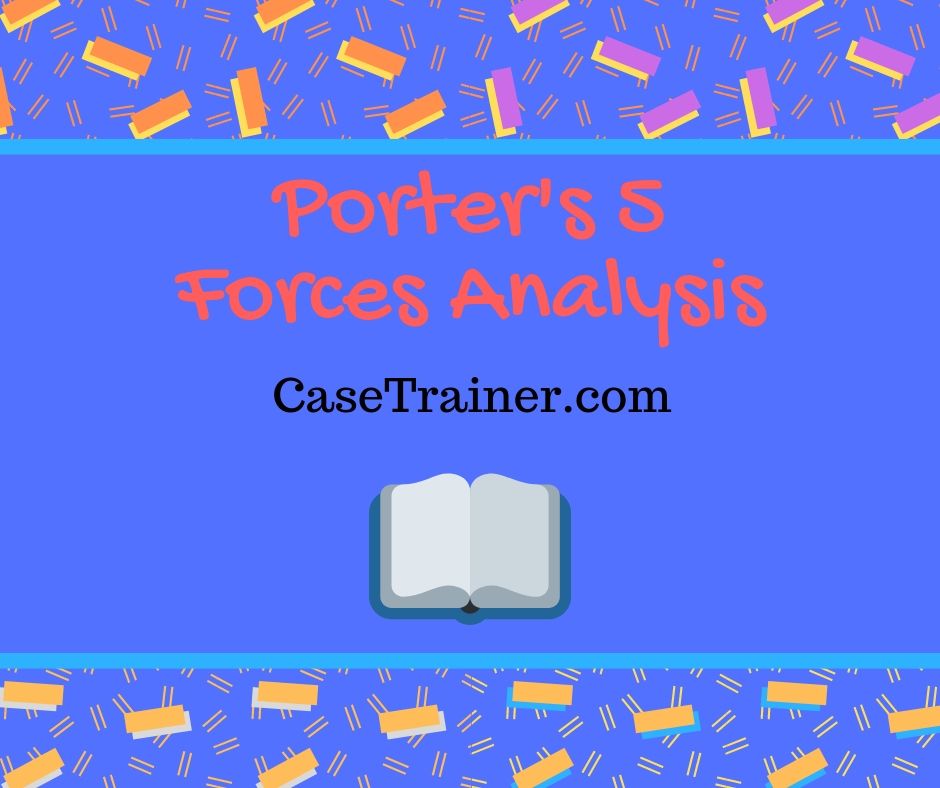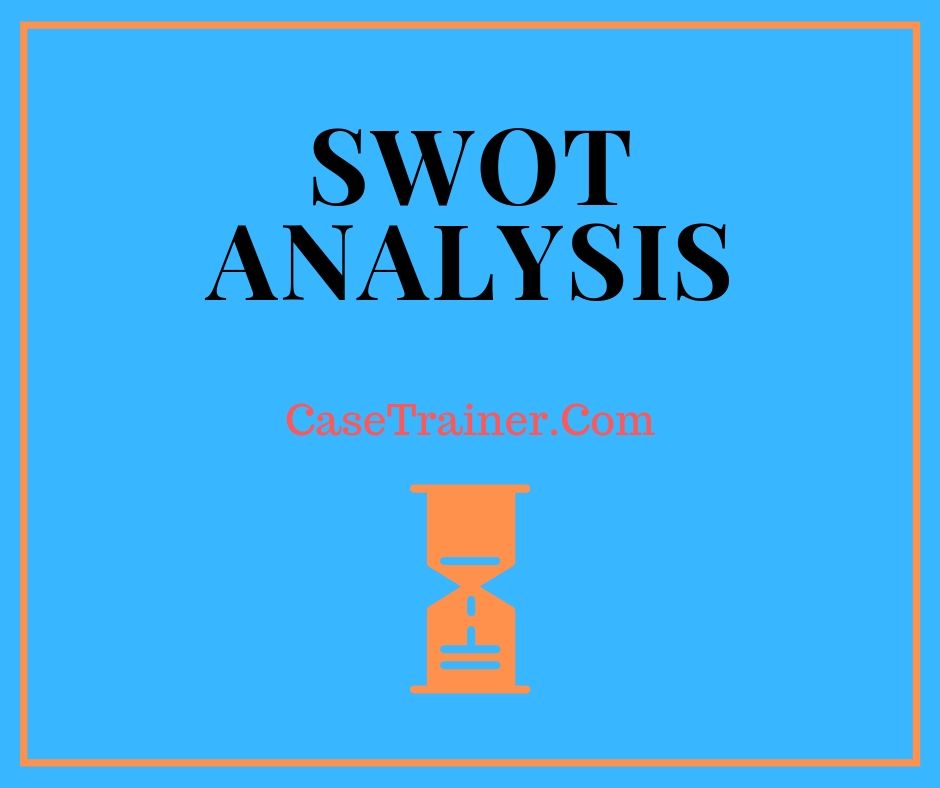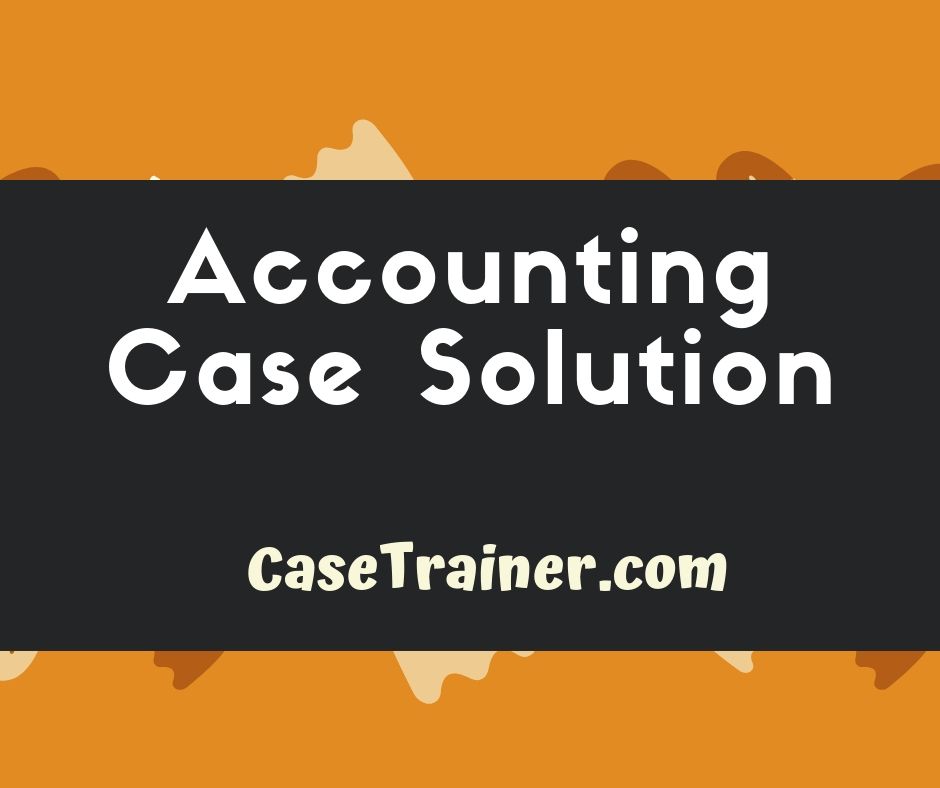The Pressure To Perform Innovation Cost And The Lean Revolution Case Study Solution and Analysis
Introduction
The Pressure To Perform Innovation Cost And The Lean Revolution Case Study Analysis is currently one of the greatest food cycle worldwide. It was established by Henri The Pressure To Perform Innovation Cost And The Lean Revolution in 1866, a German Pharmacist who first released "Farine Lactee"; a combination of flour and milk to decrease and feed infants mortality rate. At the very same time, the Page brothers from Switzerland also found The Anglo-Swiss Condensed Milk Company. The two ended up being rivals in the beginning but later merged in 1905, leading to the birth of The Pressure To Perform Innovation Cost And The Lean Revolution.
The Pressure To Perform Innovation Cost And The Lean Revolution is now a transnational business. Unlike other international business, it has senior executives from various countries and attempts to make choices thinking about the whole world. The Pressure To Perform Innovation Cost And The Lean Revolution Case Study Solution currently has more than 500 factories around the world and a network spread throughout 86 nations.
Purpose
The purpose of The Pressure To Perform Innovation Cost And The Lean Revolution Corporation is to improve the quality of life of people by playing its part and providing healthy food. While making sure that the company is succeeding in the long run, that's how it plays its part for a much better and healthy future
Vision
Nestlé's vision is to supply its consumers with food that is healthy, high in quality and safe to consume. It wishes to be innovative and concurrently comprehend the requirements and requirements of its customers. Its vision is to grow quickly and supply products that would satisfy the requirements of each age. The Pressure To Perform Innovation Cost And The Lean Revolution envisions to develop a well-trained labor force which would help the company to grow.
Objective.
Nestlé's objective is that as currently, it is the leading business in the food industry, it thinks in 'Great Food, Great Life". Its objective is to supply its consumers with a range of options that are healthy and best in taste. It is focused on providing the best food to its consumers throughout the day and night.
Products.

The Pressure To Perform Innovation Cost And The Lean Revolution Case Study Analysis has a vast array of products that it uses to its customers. Its products include food for infants, cereals, dairy items, snacks, chocolates, food for animal and bottled water. It has around four hundred and fifty (450) factories around the globe and around 328,000 workers. In 2011, The Pressure To Perform Innovation Cost And The Lean Revolution was listed as the most rewarding organization.
Objectives and objectives.
• Keeping in mind the vision and mission of the corporation, the company has actually put down its objectives and objectives. These goals and objectives are noted below.
• One goal of the business is to reach absolutely no land fill status.
• Another objective of The Pressure To Perform Innovation Cost And The Lean Revolution is to lose minimum food during production. Most often, the food produced is lost even before it reaches the consumers.
• Another thing that The Pressure To Perform Innovation Cost And The Lean Revolution is working on is to enhance its product packaging in such a method that it would help it to lower those problems and would also ensure the delivery of high quality of its products to its clients.
• Meet global requirements of the environment.
• Build a relationship based on trust with its customers, service partners, employees, and federal government.
Vital Problems.
Recently, The Pressure To Perform Innovation Cost And The Lean Revolution Company is focusing more towards the strategy of NHW and investing more of its profits on the R&D innovation. The nation is investing more on mergers and acquisitions to support its NHW method. However, the target of the business is not achieved as the sales were anticipated to grow greater at the rate of 10% each year and the operating margins to increase by 20%, given in Display H. There is a need to focus more on the sales then the development technology. Otherwise, it might result in the declined earnings rate. (Henderson, 2012).
Situational Analysis.

Analysis of Present Technique, Vision and Goals.
The current The Pressure To Perform Innovation Cost And The Lean Revolution method is based on the principle of Nutritious, Health and Wellness (NHW). This method deals with the concept to bringing modification in the customer preferences about food and making the food things healthier concerning about the health issues.
The vision of this technique is based upon the secret approach i.e. 60/40+ which just implies that the items will have a score of 60% on the basis of taste and 40% is based upon its dietary worth. The items will be produced with additional dietary value in contrast to all other products in market getting it a plus on its nutritional content.
This strategy was embraced to bring more nutritious plus tasty foods and drinks in market than ever. In competitors with other companies, with an objective of maintaining its trust over clients as The Pressure To Perform Innovation Cost And The Lean Revolution Company has acquired more relied on by customers.
Microenvironment Analysis (PESTEL Analysis).
The analysis used to measure the position of business in the market is done by using PESTLE analysis, given in Display A. The Pressure To Perform Innovation Cost And The Lean Revolution works under the guidelines and rules directed by government and food authority. The business is more focused on its products and services to make sure about the item quality and security.
Political.

The Pressure To Perform Innovation Cost And The Lean Revolution is significantly supported by Federal government to satisfy all the requirements of standards like acts of health and safety. In efforts to produce great food, The Pressure To Perform Innovation Cost And The Lean Revolution Case Study Solution is altering the standards of food and drink manufacturing.
Economic.
Initiation of the business where the capital earnings of each specific matters for the increased net sale as this varies country-to-country. The economy of the The Pressure To Perform Innovation Cost And The Lean Revolution Business in U.S. is growing year by year with variable items launch especially concentrating on the nutritional food for babies.
Social.
The social environment keeps changing with regard to time like the attitude of the consumer in addition to their way of lives. Any product or service of any company can not succeed up until the business is not concerned about the living system of the consumer. The Pressure To Perform Innovation Cost And The Lean Revolution is taking steps to meet its goals as the world remains in search of delicious and healthy food.
Technological.
In the development of service, strategic procedures are somewhat necessary. The Pressure To Perform Innovation Cost And The Lean Revolution is one of the top well-known multinational company and by time it purchases various departments to take its items to new level. The Pressure To Perform Innovation Cost And The Lean Revolution is investing more on its R&D to make its products much healthier and healthy providing customers with health benefits.
Legal.
There is no such impact of legal aspects of The Pressure To Perform Innovation Cost And The Lean Revolution as it is more concerned over its guidelines and laws.
Environmental
The Pressure To Perform Innovation Cost And The Lean Revolution, in terms of ecological impact is dedicated to operate in environmentally friendly environment with preservation of the natural deposits and energy. As due to the production of bigger variety of items there may be a hazard if the resources used are recyclable or not.
Competitive Forces Analysis (Porter's Five Forces Model).
The Pressure To Perform Innovation Cost And The Lean Revolution Case Study Help has obtained a number of companies that assisted it in diversity and growth of its item's profile. This is the comprehensive description of the Porter's design of 5 forces of The Pressure To Perform Innovation Cost And The Lean Revolution Business, given in Exhibition B.
Competitiveness.
There is extreme competitors in the market of food and beverages. The Pressure To Perform Innovation Cost And The Lean Revolution is among the leading business in this competitive industry with a variety of strong competitors like Unilever, Kraft foods and Group DANONE. The Pressure To Perform Innovation Cost And The Lean Revolution is running well in this race for last 150 years. Each company has a guaranteed share of market. This rivalry is not simply limited to the rate of the product but also for variation, development and quality. Every market is making every effort hard for the upkeep of their market share. The competitors of other companies with The Pressure To Perform Innovation Cost And The Lean Revolution is rather high.

Risk of New Entrants.
A number of barriers are there for the brand-new entrants to occur in the customer food industry. Only a few entrants be successful in this market as there is a need to comprehend the consumer requirement which needs time while recent rivals are well aware and has progressed with the consumer commitment over their items with time. There is low danger of brand-new entrants to The Pressure To Perform Innovation Cost And The Lean Revolution as it has quite big network of distribution globally dominating with well-reputed image.
Bargaining Power of Providers.
In the food and beverage industry, The Pressure To Perform Innovation Cost And The Lean Revolution owes the biggest share of market requiring higher number of supply chains. This triggers it to be an idyllic buyer for the suppliers. Any of the supplier has actually never expressed any complain about cost and the bargaining power is also low. In action, The Pressure To Perform Innovation Cost And The Lean Revolution has also been worried for its providers as it believes in long-lasting relations.
Bargaining Power of Purchasers.
There is high bargaining power of the purchasers due to terrific competitors. Switching cost is rather low for the consumers as lots of companies sale a variety of similar products. This appears to be a terrific danger for any company. Hence, The Pressure To Perform Innovation Cost And The Lean Revolution Case Study Solution makes certain to keep its customers satisfied. This has led The Pressure To Perform Innovation Cost And The Lean Revolution to be among the loyal company in eyes of its buyers.
Hazard of Alternatives.
There has been a great hazard of substitutes as there are alternatives of some of the Nestlé's items such as boiled water and pasteurized milk. There has actually also been a claim that some of its items are not safe to utilize resulting in the reduced sale. Hence, The Pressure To Perform Innovation Cost And The Lean Revolution started highlighting the health advantages of its products to cope up with the substitutes.
Rival Analysis.
It has actually become the second largest food and drink market in the West Europe with a market share of about 8.6% with only a distinction of 0.3 points with The Pressure To Perform Innovation Cost And The Lean Revolution. The Pressure To Perform Innovation Cost And The Lean Revolution draws in local costumers by its low expense of the product with the regional taste of the products maintaining its very first place in the international market. The Pressure To Perform Innovation Cost And The Lean Revolution Case Study Help business has about 280,000 employees and functions in more than 197 nations edging its rivals in many regions.
Note: A quick contrast of The Pressure To Perform Innovation Cost And The Lean Revolution with its close rivals is given up Exhibit C.
SWOT Analysis.
The internal analysis and external of the company likewise can be done through SWOT Analysis, summed up in the Exhibition F.
Strengths.
• The Pressure To Perform Innovation Cost And The Lean Revolution has an experience of about 140 years, allowing company to much better carry out, in various scenarios.
• Nestlé's has existence in about 86 countries, making it a global leader in Food and Beverage Market.
• The Pressure To Perform Innovation Cost And The Lean Revolution has more than 2000 brand names, which increase the circle of its target consumers. These brands include infant foods, animal food, confectionary items, drinks etc. Famous brand names of The Pressure To Perform Innovation Cost And The Lean Revolution include; Maggi, Kit-Kat, Nescafe, etc.
• The Pressure To Perform Innovation Cost And The Lean Revolution Case Study Help has large amount of costs on R&D as compare to its rivals, making the business to release more healthy and innovative items. This development offers the business a high competitive position in long run.
• After embracing its NHW Technique, the company has actually done big quantity of mergers and acquisitions which increase the sales development and improve market position of The Pressure To Perform Innovation Cost And The Lean Revolution.
• The Pressure To Perform Innovation Cost And The Lean Revolution is a widely known brand with high consumer's loyalty and brand recall. This brand loyalty of customers increases the chances of simple market adoption of numerous new brands of The Pressure To Perform Innovation Cost And The Lean Revolution.
Weaknesses.
• Acquisitions of those organisation, like; Kraft frozen Pizza company can provide a negative signal to The Pressure To Perform Innovation Cost And The Lean Revolution consumers about their compromise over their core proficiency of much healthier foods.
• The growth I sales as compare to the company's investment in NHW Technique are quite different. It will take long to alter the perception of individuals ab out The Pressure To Perform Innovation Cost And The Lean Revolution as a company selling nutritious and healthy items.
Opportunities.
• Presenting more health associated products allows the company to capture the market in which customers are quite conscious about health.
• Developing nations like India and China has largest markets on the planet. Expanding the market towards developing countries can boost the The Pressure To Perform Innovation Cost And The Lean Revolution organisation by increasing sales volume.
• Continue acquisitions and joint ventures increases the marketplace share of the company.
• Increased relationships with schools, hotel chains, dining establishments and so on can likewise increase the number of The Pressure To Perform Innovation Cost And The Lean Revolution Case Study Help customers. Teachers can advise their students to buy The Pressure To Perform Innovation Cost And The Lean Revolution items.
Threats.
• Economic instability in countries, which are the possible markets for The Pressure To Perform Innovation Cost And The Lean Revolution, can produce numerous issues for The Pressure To Perform Innovation Cost And The Lean Revolution.
• Shifting of products from regular to healthier, leads to additional expenses and can result in decrease business's revenue margins.
• As The Pressure To Perform Innovation Cost And The Lean Revolution has an intricate supply chain, therefore failure of any of the level of supply chain can lead the business to deal with specific issues.
Division Analysis
Group Segmentation
The demographic segmentation of The Pressure To Perform Innovation Cost And The Lean Revolution Case Study Analysis is based on four elements; age, occupation, income and gender. For example, The Pressure To Perform Innovation Cost And The Lean Revolution produces a number of products related to babies i.e. Cerelac, Nido, etc. and associated to adults i.e. confectionary items. The Pressure To Perform Innovation Cost And The Lean Revolution items are rather cost effective by nearly all levels, but its major targeted clients, in regards to earnings level are middle and upper middle level customers.
Geographical Division
Geographical segmentation of The Pressure To Perform Innovation Cost And The Lean Revolution Case Study Help is made up of its existence in almost 86 nations. Its geographical segmentation is based upon 2 primary aspects i.e. average income level of the customer along with the climate of the area. For instance, Singapore The Pressure To Perform Innovation Cost And The Lean Revolution Business's segmentation is done on the basis of the weather of the area i.e. hot, warm or cold.
Psychographic Division
Psychographic segmentation of The Pressure To Perform Innovation Cost And The Lean Revolution is based upon the character and lifestyle of the consumer. For example, The Pressure To Perform Innovation Cost And The Lean Revolution 3 in 1 Coffee target those consumers whose lifestyle is rather hectic and don't have much time.
Behavioral Division
The Pressure To Perform Innovation Cost And The Lean Revolution Case Help behavioral division is based upon the attitude understanding and awareness of the client. For instance its highly healthy products target those clients who have a health conscious mindset towards their intakes.
VRIO Analysis
The VRIO analysis of The Pressure To Perform Innovation Cost And The Lean Revolution Company is a broad variety analysis providing the organization with an opportunity to acquire a feasible competitive benefit against its competitors in the food and drink market, summed up in Exhibition I.
Belongings
The resources utilized by the The Pressure To Perform Innovation Cost And The Lean Revolution business are important for the business or not. Such as the resources like finance, human resources, management of operations and experts in marketing. This are a few of the essential important elements of for the identification of competitive benefit.
Rare
The important resources used by The Pressure To Perform Innovation Cost And The Lean Revolution are expensive or even unusual. If these resources are typically found that it would be easier for the competitors and the brand-new competitors in the industry to effortlessly move in competitors.
Replica
The imitation procedure is costly for the rivals of The Pressure To Perform Innovation Cost And The Lean Revolution Case Help Company. It can be done just in 2 various strategies i.e. product duplication which is produced and made by The Pressure To Perform Innovation Cost And The Lean Revolution Business and launching of the alternative of the products with changing cost. This increases the threat of interruption to the recent structure of the market.
Organization
This part of VRIO analysis deals with the compatibility of the company to position in the market making efficient use of its valuable resources which are difficult to mimic. Regularly, the advancement of management is totally dependent on the firm's execution technique and group. Therefore, this polishes the abilities of the firm by time based upon the choices made by firm for the progression of its strategic capitals.
Quantitative Analysis
R&D Spending as a portion of sales are decreasing with increasing real amount of costs reveals that the sales are increasing at a greater rate than its R&D costs, and permit the company to more spend on R&D.
Net Revenue Margin is increasing while R&D as a percentage of sales is decreasing. This sign also shows a thumbs-up to the R&D costs, mergers and acquisitions.
Financial obligation ratio of the company is increasing due to its spending on mergers, acquisitions and R&D advancement instead of payment of debts. This increasing debt ratio posture a hazard of default of The Pressure To Perform Innovation Cost And The Lean Revolution to its financiers and could lead a declining share rates. Therefore, in regards to increasing financial obligation ratio, the firm should not invest much on R&D and needs to pay its existing financial obligations to decrease the threat for investors.
The increasing threat of financiers with increasing debt ratio and declining share prices can be observed by huge decline of EPS of The Pressure To Perform Innovation Cost And The Lean Revolution Case Analysis stocks.
The sales development of business is also low as compare to its mergers and acquisitions due to slow perception building of customers. This slow growth likewise impede company to additional spend on its mergers and acquisitions.( The Pressure To Perform Innovation Cost And The Lean Revolution, The Pressure To Perform Innovation Cost And The Lean Revolution Financial Reports, 2006-2010).
Keep in mind: All the above analysis is done on the basis of charts and estimations given in the Exhibits D and E.
TWOS Analysis.
TWOS analysis can be utilized to obtain different methods based on the SWOT Analysis offered above. A brief summary of TWOS Analysis is given up Exhibition H.
Methods to exploit Opportunities using Strengths.
The Pressure To Perform Innovation Cost And The Lean Revolution Case Help ought to introduce more innovative items by large quantity of R&D Spending and acquisitions and mergers. It might increase the marketplace share of The Pressure To Perform Innovation Cost And The Lean Revolution and increase the earnings margins for the business. It might likewise supply The Pressure To Perform Innovation Cost And The Lean Revolution a long term competitive advantage over its rivals.
The international growth of The Pressure To Perform Innovation Cost And The Lean Revolution must be focused on market catching of establishing nations by expansion, drawing in more consumers through consumer's loyalty. As establishing nations are more populated than industrialized countries, it could increase the customer circle of The Pressure To Perform Innovation Cost And The Lean Revolution.
Methods to Overcome Weak Points to Make Use Of Opportunities.
The Pressure To Perform Innovation Cost And The Lean Revolution Case Help should do careful acquisition and merger of companies, as it could affect the customer's and society's perceptions about The Pressure To Perform Innovation Cost And The Lean Revolution. It ought to combine and obtain with those companies which have a market track record of healthy and healthy business. It would enhance the understandings of customers about The Pressure To Perform Innovation Cost And The Lean Revolution.
The Pressure To Perform Innovation Cost And The Lean Revolution should not just invest its R&D on development, instead of it should likewise focus on the R&D costs over assessment of expense of various healthy products. This would increase cost effectiveness of its items, which will result in increasing its sales, due to decreasing costs, and margins.
Strategies to utilize strengths to get rid of risks.
The Pressure To Perform Innovation Cost And The Lean Revolution needs to move to not only establishing but also to developed countries. It must expand its circle to different countries like Unilever which operates in about 170 plus nations.
Methods to overcome weaknesses to avoid threats.
The Pressure To Perform Innovation Cost And The Lean Revolution ought to wisely manage its acquisitions to avoid the threat of mistaken belief from the customers about The Pressure To Perform Innovation Cost And The Lean Revolution. It ought to acquire and combine with those countries having a goodwill of being a healthy business in the market. This would not only enhance the understanding of customers about The Pressure To Perform Innovation Cost And The Lean Revolution however would likewise increase the sales, revenue margins and market share of The Pressure To Perform Innovation Cost And The Lean Revolution. It would also enable the business to use its prospective resources effectively on its other operations rather than acquisitions of those companies slowing the NHW strategy growth.
Alternatives.
In order to sustain the brand in the market and keep the customer undamaged with the brand name, there are 2 choices:.
Option: 1.
The Business needs to invest more on acquisitions than on the R&D.
Pros:.
1. Acquisitions would increase total properties of the company, increasing the wealth of the business. Spending on R&D would be sunk cost.
2. The company can resell the obtained systems in the market, if it stops working to implement its technique. Amount invest on the R&D might not be revived, and it will be thought about totally sunk cost, if it do not offer prospective results.
3. Spending on R&D provide slow growth in sales, as it takes long time to present a product. Acquisitions offer fast outcomes, as it offer the business already developed item, which can be marketed quickly after the acquisition.
Cons:.
1. Acquisition of company's which do not fit with the company's worths like Kraftz foods can lead the company to deal with misconception of consumers about The Pressure To Perform Innovation Cost And The Lean Revolution core values of nutritious and healthy items.
2. Big spending on acquisitions than R&D would send out a signal of business's inadequacy of developing ingenious items, and would results in consumer's frustration too.
3. Big acquisitions than R&D would extend the line of product of the business by the items which are already present in the market, making company not able to introduce brand-new ingenious products.
Alternative: 2
The Business ought to spend more on its R&D rather than acquisitions.
Pros:
1. It would enable the company to produce more innovative products.
2. It would supply the company a strong competitive position in the market.
3. It would allow the company to increase its targeted clients by presenting those products which can be offered to a totally brand-new market segment.
4. Innovative items will provide long term benefits and high market share in long run.
Cons:
1. It would decrease the earnings margins of the business.
2. In case of failure, the entire spending on R&D would be thought about as sunk cost, and would impact the business at big. The danger is not in the case of acquisitions.
3. It would not increase the wealth of company, which might offer an unfavorable signal to the investors, and could result I declining stock prices.
Alternative 3:
Continue its acquisitions and mergers with considerable costs on in R&D Program.
Pros:
1. It would permit the business to present brand-new innovative products with less threat of converting the spending on R&D into sunk expense.
2. It would provide a favorable signal to the investors, as the total assets of the company would increase with its considerable R&D costs.
3. It would not affect the earnings margins of the company at a big rate as compare to alternative 2.
4. It would supply the business a strong long term market position in regards to the company's general wealth as well as in regards to innovative products.
Cons:
1. Risk of conversion of R&D spending into sunk cost, higher than alternative 1 lower than alternative 2.
2. Threat of misconception about the acquisitions, greater than alternative 2 and lesser than alternative 1.
3. Intro of less number of ingenious products than alternative 2 and high number of innovative products than alternative 1.
Suggestion
With the deep analysis of the above options, it is recommended that the company must choose the alternative 3 in order to maintain a competitive position in the long run. As the alternative 3 would allow the business to not only introduce ingenious and new items in the market it would likewise lower the high expenses on R&D under alternative 2 and increase the profit margins. It would enable the company to increase its share rates as well, as investors are willing to invest more in business with considerable R&D spending and increase in the total worth of the business.
Action and implementation Strategy
Method can be carried out efficiently by establishing certain short term in addition to long term strategies. These plans might be as follows;
Short-term Plan (0-1 year).
• Under the short term strategy The Pressure To Perform Innovation Cost And The Lean Revolution Case Solution must perform numerous activities to implement its NHW method effectively. These activities are as follows;.
• Get the audit of its brand portfolio done, to analyze the core selling brands, which generate the majority of its revenue.
• Analyze the existing target market along with the market section which is not include in the business's circle.
• Analyze the present monetary information to determine the quantity that should be invested in the R&D and acquisitions.
• Analyze the prospective investors and their nature, i.e. do they desire long term benefits (capital gain), or the desire early earnings (dividend). It would let the business to know that how much amount must be spent on R&D.
Mid Term Strategy (1-5 years).
• Get those organizations in which the company has prospective experience to handle. Obtain most beneficial organizations with a strong commitment to health, to develop the client's perceptions in the ideal direction.
• Focus more on acquisitions than R&D to develop the base in the consumer's mind about The Pressure To Perform Innovation Cost And The Lean Revolution values and vision and to avoid potential risk of sunk cost.
Long Term Plan (1-10 years).
• Obtain companies with health in addition to taste element, as the base for the The Pressure To Perform Innovation Cost And The Lean Revolution as a business producing healthy items has been constructed under midterm strategy and now the company could move towards taste aspect too to comprehend the consumers, which focus more on taste instead of health.
• Be more aggressive towards R&D than the acquisitions, as it is the considerable time to construct new products.
Conclusion.

The Pressure To Perform Innovation Cost And The Lean Revolution Case Help has established considerable market share and brand name identity in the metropolitan markets, it is recommended that the company must focus on the rural locations in terms of developing brand commitment, awareness, and equity, such can be done by creating a particular brand name allotment strategy through trade marketing strategies, that draw clear distinction in between The Pressure To Perform Innovation Cost And The Lean Revolution products and other competitor products. This will allow the business to establish brand equity for newly introduced and already produced products on a higher platform, making the efficient usage of resources and brand name image in the market.

